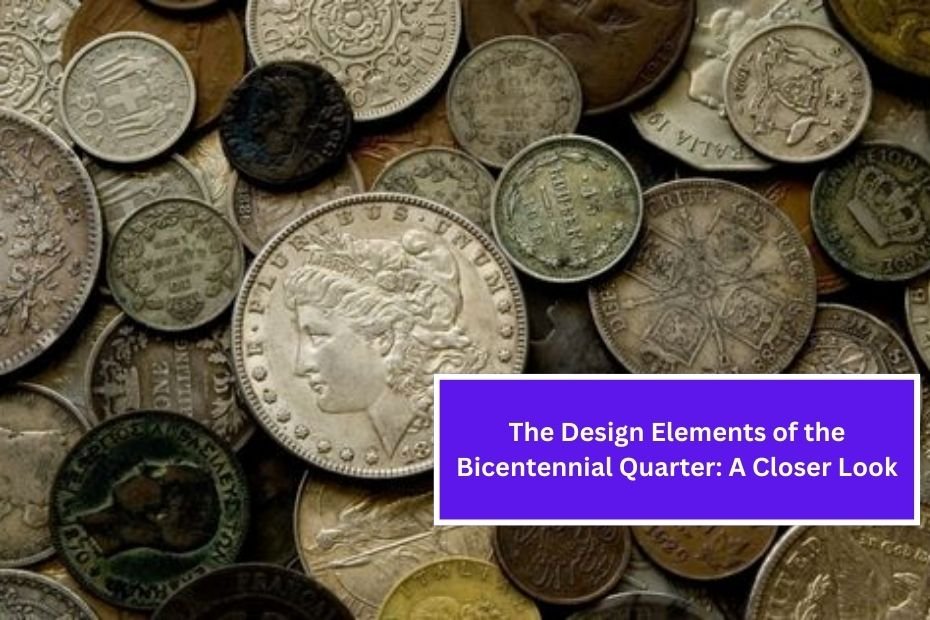In 1975 and 1976, the United States celebrated its 200th birthday, and to mark this special occasion, the U.S. Mint released the Bicentennial Quarter. This coin is unique not only because of its historical significance but also due to its special design. In this article, we will explore the design elements of the Bicentennial Quarter, its background, and its importance. We will also look at the features that make this coin stand out and how it has become a cherished item for collectors and history enthusiasts alike.
Historical Background
The United States was founded in 1776, and by the mid-1970s, plans were underway to celebrate the upcoming Bicentennial. To honor this significant milestone, the U.S. Mint decided to redesign several coins, including the quarter, which is commonly used in everyday transactions. The aim was to create a visual representation of America’s heritage and achievements.
The Bicentennial Quarter features designs that reflect the spirit of the nation, emphasizing unity and freedom. The release of these quarters was part of a larger initiative that included special designs for the half dollar and the dollar coin as well. The new designs were not only a celebration of the past but also a reminder of the values that continue to shape the country.
The Design Features
Obverse Side (Front)
The obverse side of the Bicentennial Quarter features the familiar portrait of George Washington, who has been on the quarter since 1932. However, what makes the Bicentennial Quarter special is the addition of the date. Instead of the usual single year, it displays “1776-1976.” This dual date emphasizes the Bicentennial celebration, connecting the past with the present.
Washington’s portrait remains unchanged, which maintains the continuity of American coinage. However, the significance of the two dates serves as a powerful reminder of the nation’s history and the values of democracy and freedom.
Reverse Side (Back)
The reverse side of the Bicentennial Quarter is where the most significant design changes occurred. Instead of the traditional eagle that usually appears, the Bicentennial Quarter showcases a unique design featuring a drummer from the Continental Army, symbolizing the spirit of American independence. The drummer is depicted in a classic pose, playing a drum, which evokes a sense of patriotism and unity.
Surrounding the drummer are the words “UNITED STATES OF AMERICA” and “E PLURIBUS UNUM,” which means “Out of many, one.” This phrase reflects the unity of the diverse states and peoples that make up the nation. Below the drummer is the denomination, “QUARTER DOLLAR,” which indicates the coin’s value.
Mint Marks
Like other U.S. coins, the Bicentennial Quarter also includes mint marks that indicate where the coin was produced. The mint marks for the Bicentennial Quarter are found on the obverse side, just to the right of Washington’s neck. Depending on the location of the mint, the coin will have one of the following marks:
- D for Denver Mint
- P for Philadelphia Mint
The mint marks can provide valuable information for collectors, as quarters from different mints can have variations in quality and rarity.
Collectibility and Significance
The Bicentennial Quarter is not only a piece of currency but also a collector’s item. After its release, many people began to collect these coins as a way to commemorate the Bicentennial celebration. Collectors appreciate the unique designs and the historical context behind the coin.
As time has passed, certain variations of the Bicentennial Quarter, especially those in uncirculated or proof condition, have become more valuable. Collectors often seek out coins with specific mint marks or those that show unique features, such as errors in the design or production process.
The Legacy of the Bicentennial Quarter
The Bicentennial Quarter has left a lasting legacy, both as a piece of American history and as a representation of the values that the country stands for. The coin serves as a reminder of the struggles and sacrifices made by those who fought for independence and the ongoing journey towards a more perfect union.
Additionally, the Bicentennial Quarter sparked an interest in coin collecting among many Americans. It introduced new generations to the hobby and encouraged people to learn more about the history of their country through its currency. The design elements of the quarter have continued to inspire new coin designs in the years since its release.
Conclusion
In summary, the Bicentennial Quarter is a remarkable piece of American history that reflects the nation’s values, struggles, and achievements. The unique design elements—such as the dual dates on the obverse and the drummer on the reverse—make it a standout coin in U.S. currency.
For collectors, the Bicentennial Quarter offers not only the thrill of collecting but also the opportunity to connect with a significant moment in American history. As we look back on the Bicentennial celebration and its lasting impact, the quarter remains a symbol of unity, freedom, and the enduring spirit of the United States.
Whether you’re a seasoned collector or someone simply curious about American history, the Bicentennial Quarter is a fascinating subject worth exploring. Its design elements and historical significance make it a cherished part of the nation’s story, and it will continue to be appreciated by future generations.

